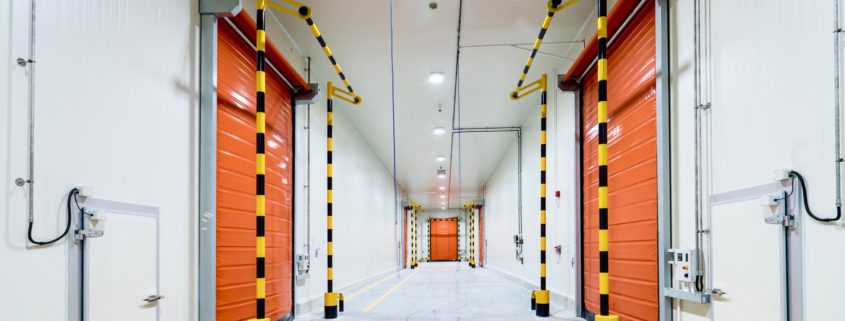Smart, Ultra-Cold, and Scalable – The Future of Pharma Cold Storage
Executive Summary
The pharmaceutical cold chain is undergoing rapid transformation in 2025. With the rise of biologics, mRNA vaccines, and precision therapies, demand is surging for more sophisticated and scalable cold storage solutions. At the same time, regulatory bodies are enforcing stricter storage validation and temperature monitoring protocols across the entire product lifecycle. This white paper explores the latest innovations in pharmaceutical cold storage, from modular ultra-cold capacity to intelligent temperature monitoring systems, and explains how Euro-American is investing in the future to support the evolving needs of life sciences customers.
The Cold Chain Gets Colder – and Smarter
Until recently, most cold chain strategies revolved around maintaining 2–8°C refrigeration. Today, many biologic products and gene-based therapies require -20°C, -40°C, or even -80°C conditions to preserve molecular integrity. Meanwhile, global supply chains are more complex, increasing the risk of temperature excursions during transit or warehousing.
To meet these challenges, logistics providers and manufacturers alike are turning to smart, tech-enabled cold chain infrastructure, including:
- IoT-connected storage units with real-time monitoring
- Automated cold storage systems with controlled access and redundancy
- Smart packaging that logs temperature history from manufacturer to patient
- Scalable modular freezer units to accommodate shifting demand
Industry Shifts Fueling Cold Storage Evolution
- Biologics Growth: Over 40% of newly approved drugs in 2024 were biologics, many of which require cold or ultra-cold storage.
- Global Distribution Needs: COVID-era infrastructure has expanded international cold chain expectations, especially in emerging markets.
- Stricter Compliance: Regulatory bodies like the FDA and EMA now expect full data visibility across the storage and transit journey.
- Pressure for Agility: CDMOs and pharmaceutical manufacturers are increasingly outsourcing logistics—but expect partners to adapt quickly to fluctuating volumes.
The New Standards in Cold Storage
Euro-American recognizes that “standard cold storage” is no longer sufficient. Life sciences clients now demand:
- Multi-temperature zones (e.g., 2–8°C, -20°C, -80°C, cryogenic LN2 environments)
- 24/7 redundant power systems and disaster recovery protocols
- Validated WMS platforms to manage GMP lot control, expiry tracking, and recall readiness
- Chain of custody documentation integrated with your QMS or ERP system
- Real-time dashboards with remote access and excursion alerts
Cold Chain Integration with Broader Logistics Strategy
Effective cold storage doesn’t end at the warehouse door. Euro-American’s strategy integrates cold storage into a full-service pharma logistics plan:
- Direct-to-site coordination to reduce intermediate stops and risk exposure
- Customs-prepared documentation to speed up border crossing for temperature-sensitive cargo
- Time-definite delivery windows to minimize dwell time and product warming
- Seamless handoffs to final-mile carriers with validated thermal transport assets
Euro-American’s Cold Storage Commitment
With decades of expertise in pharmaceutical logistics, Euro-American’s facilities are built to meet the next decade’s temperature control challenges:
- Dedicated cGMP temperature-controlled spaces in Massachusetts
- Qualified ultra-cold storage units with backup generators and environmental alarms
- Integrated WMS with API options for real-time client access
- On-site QA personnel ensuring documentation, calibration, and CAPA oversight
- Temperature-mapped zones and excursion logs available for audits
Conclusion
As pharmaceutical development trends toward fragile, temperature-sensitive therapies, logistics providers must evolve beyond simple refrigeration. Euro-American is investing in future-ready cold chain infrastructure—smart, scalable, validated—to ensure every biologic, vaccine, and advanced therapy remains safe and effective from storage through to final delivery. Contact us today!
References
IQVIA. (2025). Global Trends in Biologics and Advanced Therapies.
U.S. Food and Drug Administration. (2024). Guidance for Industry: Storage and Handling of Biologic Products.
Biopharma Logistics Forum. (2025). Cold Chain 2.0: Technology and Capacity Trends.
Pharmaceutical Commerce. (2025). Cold Storage Infrastructure: Scaling Up for Biotech.
EMA. (2024). Good Distribution Practice (GDP) Guidelines – Temperature-Sensitive Medicines.



